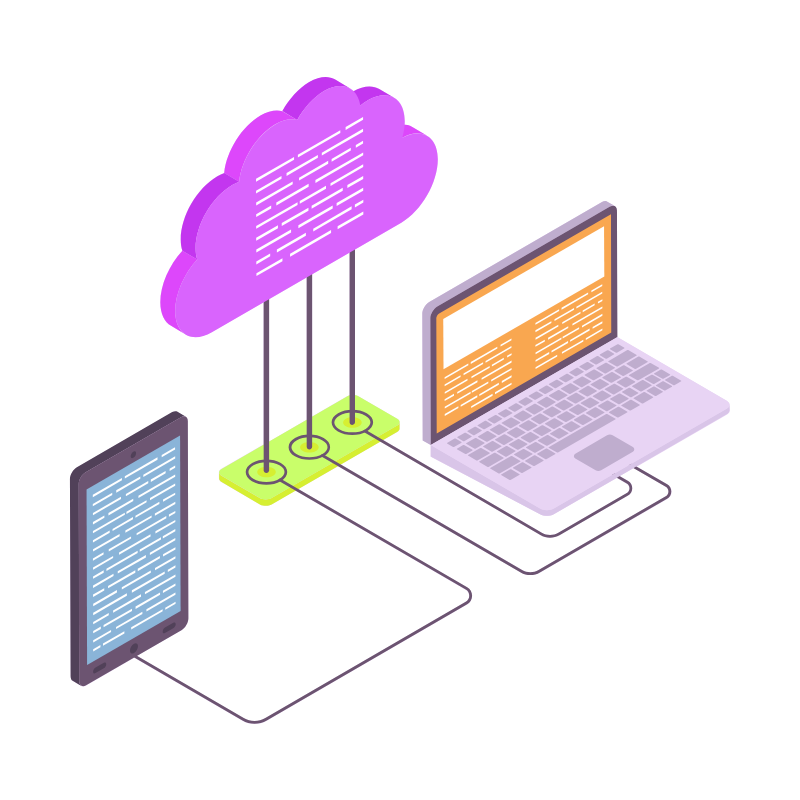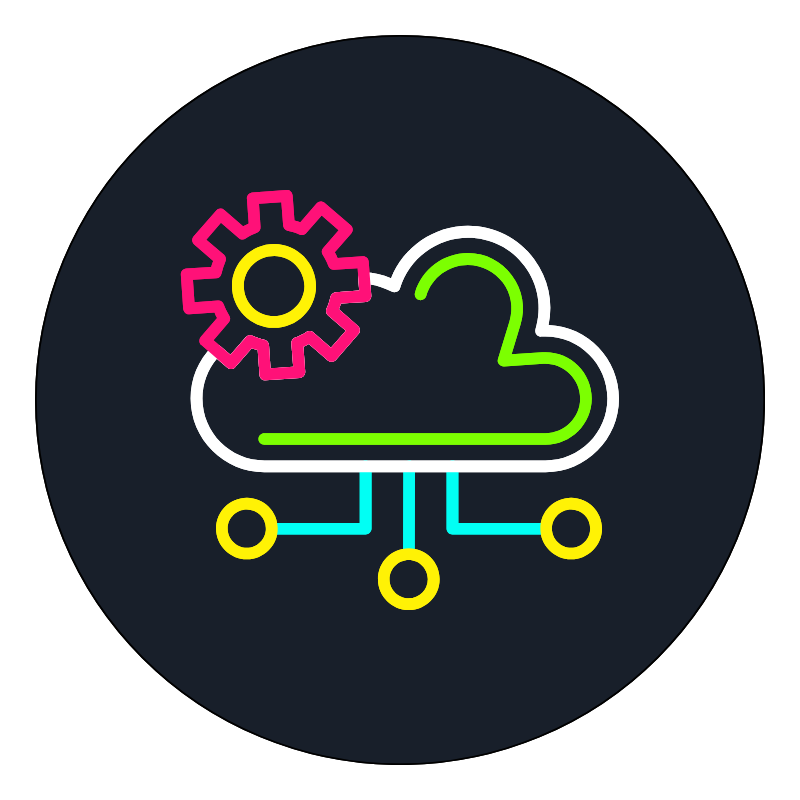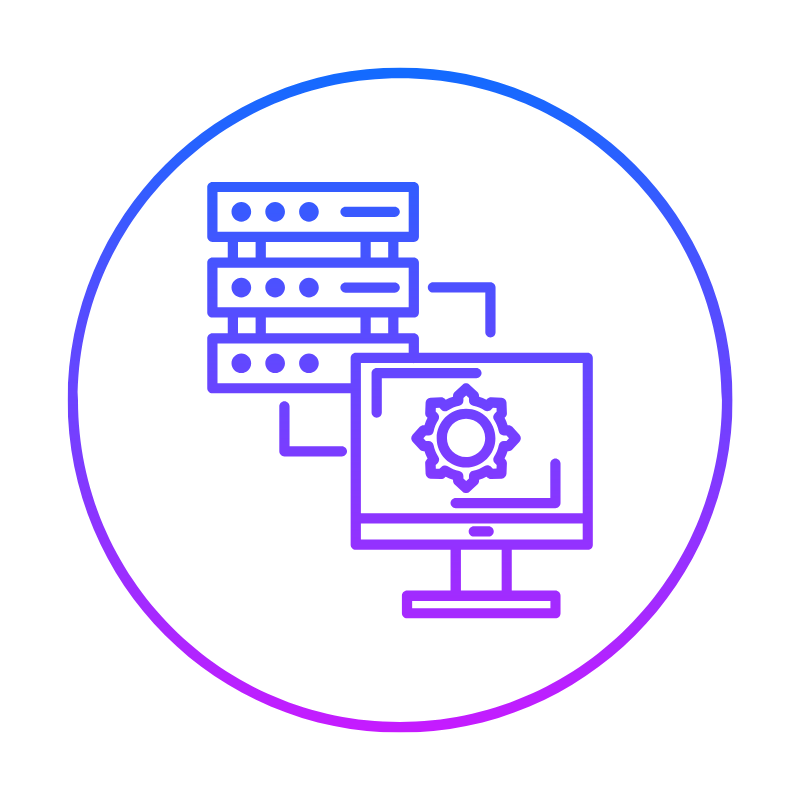Last updated on January 14th, 2025 at 12:30 pm
Starting an online grocery business in the Philippines is an exciting venture with enormous potential.
Lets look at some numbers.
The Philippine Grocery eCommerce market is predicted to reach US$1,806.6 million by 2024 and account for 9.9% of the total eCommerce market in the Philippines.
Better part?
Within the overall Grocery eCommerce market, the Food eCommerce segment is the largest, predicted to reach US$1,118.7 million by 2024 and accounting for 61.9% of the Grocery eCommerce market.
As you can see, more Filipinos are embracing the convenience of online shopping for their daily essentials.
So, let me show you how you can tap into this growing market and build a successful online grocery empire.
The State of Online Grocery Shopping in the Philippines
The online grocery business in the Philippines has exploded in recent years.
As we’ve already seen, the market is predicted to reach US$1,806.6 million by 2024!
I remember when I first moved to Manila, lugging heavy bags of rice and canned goods up to my condo was a weekly nightmare.
Now? It’s a whole new ballgame.
With just a few taps on my phone, I can have everything from fresh produce to imported snacks delivered right to my doorstep.
And I’m not alone in this shift.
The COVID-19 pandemic accelerated this trend, pushing even the most tech-resistant Titas to embrace online grocery shopping.
And this alone let to online grocery spending growing by 153% in 2020!
But here’s the kicker: even as things return to “normal”, this habit is sticking around.
Why?
Because once people taste the convenience, there’s no going back.
So, if you’re thinking about diving into the online grocery business in the Philippines, you’re onto something big.
But before we get into the nitty-gritty, let’s break down why this market is so hot right now:
- Increasing Internet penetration: As of January 2024, there were 86.98 million internet users in the Philippines, representing a 73.6% Internet penetration rate. More Filipinos have access to smartphones and reliable internet than ever before.
- Busy urban lifestyles: Time is precious, and online shopping saves bucketloads of it.
- Growing middle class: There’s more disposable income floating around, and people are willing to pay for convenience.
- Improved logistics: Delivery services are getting faster and more reliable across the archipelago.
Now, I know what you’re thinking: “But isn’t the market already saturated?”
Here’s the truth: there’s still plenty of room for innovation and niche players.
Maybe you’ll focus on organic produce, or perhaps you’ll cater to the health-conscious fitness crowd.
The key is finding your unique angle.
So, are you ready to grab a slice of this juicy market?
Let’s roll up our sleeves and get into the how-to.
Step 1: Market Research: Understand Your Potential Customers and Competitors
Before you jump headfirst into the online grocery business in the Philippines, you need to know who you’re selling to and who you’re up against.
Trust me, skipping this step is like trying to navigate Manila traffic without Waze – you’ll end up lost and frustrated.
Know Your Customer
First things first, who’s your target market?
Are you going after busy professionals in Makati?
Health-conscious millennials in BGC?
Budget-conscious families in the provinces?
Each group has different needs, preferences, and pain points.
To get a clear picture, try this:
- Create customer personas: Give them names, jobs, hobbies – make them real.
- Conduct surveys: Use Google Forms or SurveyMonkey to gather insights.
- Join Facebook groups: Listen to what potential customers are saying about their grocery shopping experiences.
- Analyze existing data: Look at reports from Nielsen or Kantar about Filipino shopping habits.
Remember, the goal is to understand your customers so well that your product sells itself.
Scope Out the Competition
Now, let’s talk about your rivals.
Who are the big players in the online grocery space in the Philippines?
Here’s a quick rundown:
- MetroMart: Known for its wide selection and partnerships with major retailers.
- GrabMart: Leveraging its existing user base from ride-hailing.
- Lazada and Shopee: E-commerce giants expanding into groceries.
- WalterMart: A traditional supermarket chain going digital.
But don’t just look at the giants.
Check out smaller, niche players too.
Maybe there’s a local organic produce delivery service or a specialty Asian grocery store making waves.
Here’s how to dig deeper:
- Mystery shop: Place orders with your competitors to experience their service firsthand.
- Analyze their websites: Look at their product range, pricing, and user experience.
- Read customer reviews: What do people love? What are they complaining about?
- Check their social media: How are they engaging with customers?
The goal isn’t to copy your competitors, but to find gaps in the market that you can fill.
Maybe you’ll offer faster delivery, a more user-friendly app, or a unique product range that others don’t have.
Find Your Niche
Now that you know your potential customers and competitors, it’s time to carve out your niche.
This is where you’ll shine.
Ask yourself:
- What can I offer that others don’t?
- What problems can I solve for my target market?
- What unique value proposition can I bring to the table?
Maybe you’ll focus on:
- Locally sourced produce: Supporting Filipino farmers and reducing carbon footprint.
- Specialty dietary needs: Catering to keto, vegan, or gluten-free diets.
- Bulk buying for businesses: Targeting restaurants, catering services, or small stores.
- Subscription boxes: Curated weekly grocery deliveries for busy professionals.
The possibilities are endless.
The key is to find that sweet spot where your passion meets market demand.
Remember, in the world of online grocery business in the Philippines, being everything to everyone is a recipe for disaster.
Find your niche, own it, and watch your business grow.
Step 2: Legal Requirements and Regulations for Online Grocery Businesses
Alright, let’s talk about the not-so-sexy but absolutely crucial part of starting your online grocery business in the Philippines: the legal stuff.
I know, I know.
You’d rather be taste-testing products or designing your website.
But trust me, getting this right from the start will save you major headaches down the road.
Registering Your Business
First things first, you need to make your business official.
Here’s the step-by-step process:
- Choose your business structure: Will you be a sole proprietorship, partnership, or corporation?
- Register with the Department of Trade and Industry (DTI): This is for sole proprietorships. Get your business name registered.
- Register with the Securities and Exchange Commission (SEC): This is for corporations and partnerships.
- Get a Barangay Clearance: Yes, even online businesses need this.
- Obtain a Mayor’s Permit: Visit your local city hall for this.
- Register with the Bureau of Internal Revenue (BIR): Get your Tax Identification Number (TIN) and register for VAT if applicable.
Pro tip: Consider hiring a lawyer or accountant to help you navigate this process.
It’s an investment that can save you time and potential legal issues in the future.
Food Safety Regulations
Selling food online comes with its own set of rules.
The Food and Drug Administration (FDA) is your new best friend here.
Key things to remember:
- License to Operate (LTO): You’ll need this from the FDA.
- Product registration: Certain food products may need to be registered with the FDA.
- Labeling requirements: Make sure your product labels comply with FDA regulations.
- Storage and handling guidelines: Proper food storage is crucial, especially for perishables.
E-commerce Laws
The Philippines has specific laws governing online businesses.
Familiarize yourself with:
- E-Commerce Act of 2000: This covers electronic transactions and data messages.
- Cybercrime Prevention Act of 2012: Protect yourself and your customers from online fraud.
- Data Privacy Act of 2012: Crucial for handling customer information.
Tax Obligations
Nobody likes talking about taxes, but they’re unavoidable.
Here’s what you need to know:
- Value Added Tax (VAT): If your annual sales exceed ₱3 million, you’ll need to register for VAT.
- Percentage Tax: If you’re below the VAT threshold, you’ll pay this instead.
- Income Tax: Don’t forget to declare your business income.
Pro tip: Use accounting software to keep track of your finances from day one.
It’ll make tax season so much easier.
Consumer Protection
Last but not least, make sure you’re protecting your customers.
Key points:
- Clear refund and return policies: Spell these out on your website.
- Accurate product descriptions: Don’t oversell or misrepresent your products.
- Secure payment gateways: Protect your customers’ financial information.
Remember, complying with these regulations isn’t just about avoiding fines or legal troubles.
It’s about building trust with your customers.
In the online grocery business in the Philippines, trust is everything.
Show your customers that you’re a legitimate, responsible business, and they’ll keep coming back for more.
Read also: How To Start a Profitable Food Cart Business in the Philippines
Step 3: Sourcing Products and Building Relationships with Suppliers
Now we’re getting to the good stuff.
The heart of your online grocery business in the Philippines is your product range.
And to build a killer product range, you need rock-solid relationships with suppliers.
Let’s dive in.
Finding Suppliers
Where do you start looking for suppliers?
Here are some ideas:
- Local markets: Visit palengkes and wholesale markets in your area.
- Trade shows: Attend food and beverage expos to meet potential suppliers.
- Online directories: Check out sites like Alibaba or GlobalSources for both local and international suppliers.
- Agricultural cooperatives: Connect directly with farmer groups for fresh produce.
- Importers: For those hard-to-find international products.
Pro tip: Don’t just go for the cheapest option.
Look for suppliers who can consistently deliver quality products.
Building Relationships
Once you’ve found potential suppliers, it’s time to build those relationships.
Here’s how:
- Start small: Test the waters with smaller orders before committing to large quantities.
- Communicate clearly: Be upfront about your expectations and needs.
- Pay on time: Nothing kills a supplier relationship faster than late payments.
- Visit their facilities: If possible, see their operations firsthand.
- Be loyal: Stick with good suppliers and they’ll stick with you during tough times.
Remember, your suppliers are partners in your business, not just vendors.
Treat them well, and they’ll go the extra mile for you.
Negotiating Terms
Now, let’s talk money.
Negotiating with suppliers is an art.
Here are some tips:
- Know your numbers: Understand your costs and margins before negotiating.
- Volume discounts: Ask about bulk pricing options.
- Payment terms: Try to negotiate favorable payment terms, like net 30 or 60.
- Exclusivity: Can you get exclusive rights to certain products in your area?
- Quality guarantees: Discuss what happens if products don’t meet quality standards.
Pro tip: Always get agreements in writing.
Verbal deals can lead to misunderstandings down the road.
Managing Inventory
Inventory management is crucial in the grocery business.
You’re dealing with perishables, after all.
Here’s what to consider:
- Just-in-time inventory: Keep stock levels low to reduce waste.
- First-in, first-out (FIFO): Older stock should be sold first.
- Demand forecasting: Use data to predict what products will sell and when.
- Storage facilities: Invest in proper storage, especially for cold items.
- Inventory tracking software: Use tools like Sortly or inFlow to keep track of stock levels.
Diversifying Your Product Range
Don’t put all your eggs in one basket (pun intended).
A diverse product range can help you:
- Appeal to a wider customer base
- Increase average order value
- Reduce risk if certain products don’t sell well
Consider including:
- Fresh produce
- Pantry staples
- Frozen foods
- Household essentials
- Local specialty products
- International items
Pro tip: Start with a core range of essential items, then gradually expand based on customer demand and feedback.
Quality Control
In the online grocery business in the Philippines, quality is everything.
One bad experience can lose you a customer forever.
Here’s how to maintain quality:
- Inspect deliveries: Check incoming products for quality and freshness.
- Proper storage: Invest in good storage facilities to maintain product quality.
- Regular audits: Conduct periodic checks on your inventory.
- Customer feedback: Pay attention to what your customers are saying about product quality.
Remember, in the online grocery business in the Philippines, your products are your reputation.
Choose them wisely, manage them carefully, and your customers will keep coming back for more.
Step 4: Setting Up Your Online Store: Website Development and E-commerce Platforms
Alright, it’s time to bring your online grocery business in the Philippines to life in the digital world.
This is where the rubber meets the road.
Your website is your storefront, your salesperson, and your brand ambassador all rolled into one.
Let’s make it count.
Choosing Your Platform
First decision: build from scratch or use an existing e-commerce platform?
Here are your options:
Custom-built website:
- Pros: Complete control, unique features
- Cons: Expensive, time-consuming
E-commerce platforms:
- Options: Shopify, WooCommerce, Magento
- Pros: Easy to set up, built-in features
- Cons: Less flexibility, ongoing fees
Marketplace platforms:
- Options: Lazada, Shopee
- Pros: Built-in customer base, easy to start
- Cons: High competition, less brand control
My advice?
Unless you have a unique business model that absolutely requires a custom solution, start with an e-commerce platform.
It’s faster, cheaper, and lets you focus on what really matters: your products and customers.
Design and User Experience
Your website needs to be:
- Mobile-friendly: Most Filipinos shop on their phones.
- Fast-loading: Slow sites kill conversions.
- Easy to navigate: Customers should find what they need in 3 clicks or less.
- Visually appealing: Use high-quality images of your products.
Key features to include:
- Search function: Let customers find products easily.
- Filtering options: By category, price, brand, etc.
- Customer reviews: Social proof is powerful.
- Clear calls-to-action: Make it obvious how to add items to cart and checkout.
Pro tip: Use heat mapping tools like Hotjar to see how users interact with your site.
It’s like having x-ray vision into your customers’ behavior.
Product Pages
Your product pages are where the magic happens.
Make them shine with:
- Clear, enticing product titles
- High-quality images: Show multiple angles if possible.
- Detailed descriptions: Include ingredients, nutritional info, and usage suggestions.
- Pricing information: Be transparent about any discounts or bulk pricing.
- Stock availability: Real-time updates to avoid disappointment.
- Related products: Encourage additional purchases.
Remember, your product pages need to replicate the in-store experience of picking up an item and examining it.
Give your customers all the information they need to make a confident purchase.
Shopping Cart and Checkout
This is the home stretch.
Don’t lose customers at the finish line.
Make your checkout process:
- Simple: Minimize the number of steps required.
- Secure: Use SSL encryption and display security badges.
- Flexible: Offer multiple payment options (credit card, e-wallets, cash on delivery).
- Transparent: Show all costs (including delivery fees) upfront.
Pro tip: Implement an abandoned cart recovery system.
A simple email reminder can recover lost sales.
Customer Accounts
Encourage customers to create accounts by offering:
- Order history: Easy reordering of favorite items.
- Saved addresses: For quicker checkout.
- Wishlist feature: Let customers save items for later.
- Personalized recommendations: Based on past purchases.
But remember, always offer a guest checkout option for those who prefer it.
Mobile App
Should you develop a mobile app?
It depends.
Pros:
- Better user experience
- Push notifications for promotions
- Increased customer loyalty
Cons:
- Expensive to develop and maintain
- Customers need to download and update it
My advice?
Start with a mobile-responsive website.
If you see high mobile traffic and repeat customers, then consider an app.
Testing and Launching
Before you go live:
- Test, test, test: Try every feature, click every button.
- Soft launch: Start with a small group of beta testers.
- Gather feedback: Listen to your early users and make improvements.
- Stress test: Make sure your site can handle high traffic.
Remember, your website is
Remember, your website is never truly “finished.”
It’s a living, breathing part of your business that needs constant care and attention.
Keep improving, keep testing, and keep listening to your customers.
In the online grocery business in the Philippines, your website is often the first (and sometimes only) interaction customers have with your brand.
Make it count.
Step 5: Logistics and Delivery: Ensuring Smooth Operations
Let’s face it: in the online grocery business in the Philippines, your delivery game can make or break you.
You could have the best products and the slickest website, but if you can’t get those groceries to your customers quickly and in good condition, you’re toast.
Let’s dive into how to nail your logistics and delivery.
In-House vs. Third-Party Delivery
First big decision: do you handle deliveries yourself or outsource?
Here’s the breakdown:
In-house delivery:
- Pros: More control, better brand experience
- Cons: High initial investment, complex to manage
Third-party delivery:
- Pros: Lower upfront costs, scalable
- Cons: Less control, potential quality issues
My take?
Start with third-party delivery to test the waters.
As you grow and understand your delivery needs better, you can consider building your own fleet.
Choosing a Delivery Partner
If you’re going the third-party route, here are some options in the Philippines:
- Lalamove: Great for on-demand, same-day deliveries
- Grab Express: Leverages Grab’s extensive network
- Transportify: Good for larger orders or bulky items
- Ninja Van: Offers nationwide coverage
When choosing a partner, consider:
- Coverage area
- Pricing structure
- Tracking capabilities
- Insurance options
- Customer service quality
Pro tip: Don’t put all your eggs in one basket.
Have relationships with multiple delivery partners to ensure you’re always covered.
Packaging
In the grocery game, packaging is crucial.
You need to ensure your products arrive fresh and undamaged.
Consider:
- Insulated bags: For frozen and chilled items
- Sturdy boxes: For heavy or fragile items
- Eco-friendly options: Filipinos are becoming more environmentally conscious
- Branded packaging: Turn your deliveries into a marketing opportunity
Remember, your packaging is part of the customer experience.
Make it memorable (in a good way).
Order Fulfillment Process
Here’s a basic order fulfillment flow:
- Receive order: Through your website or app
- Pick items: From your inventory
- Pack order: Using appropriate packaging
- Assign delivery: To in-house team or third-party partner
- Track delivery: From dispatch to customer receipt
- Confirm delivery: Get customer confirmation
The key is to make this process as efficient as possible.
Consider using order management software to streamline operations.
Inventory Management
Effective inventory management is crucial for smooth logistics.
Here are some tips:
- Use inventory management software: Keep real-time track of stock levels
- Implement FIFO: First in, first out, especially for perishables
- Set reorder points: Automate reordering to avoid stockouts
- Regular stock takes: Physical counts to ensure accuracy
- Demand forecasting: Use data to predict future inventory needs
Remember, in the grocery business, overstopping can be as bad as understocking.
Find the right balance.
Handling Perishables
Perishable items need special attention:
- Temperature control: Invest in proper cold storage
- Quick turnaround: Minimize time between receiving and delivery
- Quality checks: Inspect perishables regularly
- Clear expiry policies: Have a plan for items approaching expiry
Pro tip: Consider offering discounts on items nearing expiry.
It’s better than letting them go to waste.
Delivery Zones and Timeframes
Be clear about:
- Where you deliver: Define your coverage area clearly
- Delivery timeframes: Offer specific time slots, not vague “all-day” windows
- Minimum order values: Consider setting these for free delivery
- Express options: Offer faster delivery for an additional fee
Remember, managing customer expectations is key.
It’s better to under-promise and over-deliver than vice versa.
Returns and Refunds
Even with the best processes, sometimes things go wrong.
Have a clear policy for:
- Damaged items: How will you handle these?
- Wrong items: What’s your process for correcting mistakes?
- Refund process: How quickly can customers expect their money back?
- Return logistics: How will you handle picking up returned items?
Make your policies clear on your website to avoid confusion.
Customer Communication
Keep your customers in the loop:
- Order confirmation: Send immediately after order placement
- Preparation updates: Let them know when their order is being packed
- Dispatch notification: Alert them when the order is out for delivery
- Delivery confirmation: Get confirmation that the order was received
Consider using SMS or WhatsApp for these updates.
Many Filipinos prefer these over email.
Remember, in the online grocery business in the Philippines, your logistics and delivery are your frontline.
They’re how you deliver on your promises (literally).
Get this right, and you’ll have customers for life.
Step 6: Marketing Strategies: Growing Your Online Grocery Business in the Philippines
Alright, you’ve got your products, your website is up and running, and your logistics are sorted.
Now it’s time to get the word out.
In the competitive world of online grocery business in the Philippines, smart marketing can be your secret weapon.
Let’s dive into some strategies to help you stand out and grow your customer base.
Know Your Unique Selling Proposition (USP)
Before you start marketing, you need to know what makes you special.
Ask yourself:
- What do we offer that others don’t?
- Why should customers choose us over the competition?
- What problem are we solving for our target market?
Maybe it’s your focus on local, organic produce.
Or perhaps it’s your lightning-fast delivery times.
Whatever it is, make it the cornerstone of your marketing efforts.
Social Media Marketing
Filipinos love social media.
Here’s how to leverage it:
Facebook:
- Create a business page
- Join local community groups
- Use Facebook ads for targeted reach
Instagram:
- Share mouth-watering food photos
- Use relevant hashtags (#OnlineGroceryPH, #FreshProducePH)
- Leverage Instagram Stories for behind-the-scenes content
TikTok:
- Create fun, short-form content (recipe ideas, packing process, etc.)
- Participate in trending challenges
- Collaborate with local influencers
Pro tip: Don’t try to be everywhere at once.
Pick 1-2 platforms where your target audience hangs out and dominate those.
Content Marketing
Content is king, especially in the food industry.
Here are some content ideas:
- Blog posts: Share recipes, nutrition tips, meal planning guides
- Video content: Product reviews, cooking tutorials, farmer spotlights
- Infographics: Nutritional information, seasonal produce guides
- E-books: Comprehensive guides (e.g., “The Ultimate Guide to Eating Organic in the Philippines”)
Remember, the goal is to provide value, not just sell.
Build trust and establish yourself as an authority in the space.
Email Marketing
Don’t underestimate the power of a good email strategy.
Use email to:
- Welcome new customers
- Share weekly specials and promotions
- Provide personalized product recommendations
- Re-engage inactive customers
- Share valuable content (recipes, tips, etc.)
Pro tip: Segment your email list based on customer behavior and preferences for more targeted messaging.
Influencer Partnerships
Influencer marketing can be powerful, especially in the Philippines.
Consider partnering with:
- Food bloggers
- Fitness influencers
- Mommy bloggers
- Local chefs
But remember, authenticity is key.
Choose influencers whose values align with your brand.
Referral Program
Word-of-mouth is golden in the grocery business.
Incentivize it with a referral program:
- Offer discounts or free delivery for successful referrals
- Make it easy for customers to share their referral code
- Consider a two-sided reward (for both the referrer and the new customer)
Local SEO
Don’t forget about search engine optimization, especially local SEO.
- Optimize your Google My Business listing
- Encourage customer reviews on Google and Facebook
- Use location-based keywords in your content
- Create location-specific landing pages if you serve multiple areas
Partnerships and Collaborations
Think beyond traditional marketing.
Consider partnering with:
- Local restaurants for ingredient boxes
- Fitness centers for healthy meal plans
- Corporate offices for employee grocery programs
These partnerships can open up new customer bases and revenue streams.
Promotions and Loyalty Programs
Everyone loves a good deal.
Consider:
- Welcome discounts for first-time customers
- Seasonal promotions (e.g., Christmas hampers, New Year health kits)
- Bulk buy discounts
- Loyalty points program for repeat customers
But be careful not to train your customers to only buy on discount.
Use promotions strategically.
Community Engagement
In the Philippines, community is everything.
Get involved by:
- Sponsoring local events
- Participating in barangay clean-up drives
- Supporting local farmers and producers
- Hosting online or offline workshops (e.g., cooking classes, nutrition seminars)
Show that you’re not just a business, but a valuable part of the community.
Measure and Adjust
Finally, remember that marketing is not a “set it and forget it” thing.
Regularly analyze your efforts:
- Track website traffic and conversion rates
- Monitor social media engagement
- Analyze email open and click-through rates
- Survey customers for feedback
Use this data to continually refine your marketing strategy.
Remember, in the online grocery business in the Philippines, your marketing is how you tell your story and connect with customers.
Make it authentic, make it valuable, and make it uniquely you.
With these strategies in your toolkit, you’re well on your way to growing a thriving online grocery business in the Philippines.
It’s an exciting journey, full of challenges and opportunities.
Stay nimble, keep learning, and always put your customers first.
Now, go out there and shake up the online grocery scene!
FAQs About Starting an Online Grocery Business in the Philippines
Q: How much capital do I need to start an online grocery business in the Philippines?
A: The initial investment can vary widely depending on your business model and scale. You could start small with as little as ₱50,000 to ₱100,000 for a basic setup, or invest several million pesos for a larger operation. Key costs include inventory, website development, storage facilities, and marketing.
Q: Do I need a physical store to start an online grocery business?
A: Not necessarily. Many successful online grocery businesses operate without a physical storefront. However, you will need a storage facility or warehouse to keep your inventory.
Q: What licenses do I need to operate an online grocery business in the Philippines?
A: At minimum, you’ll need a business registration from DTI or SEC, a barangay clearance, a mayor’s permit, and a BIR registration. Depending on your products, you may also need licenses from the FDA.
Q: How can I compete with big supermarket chains that are also going online?
A: Focus on your unique value proposition. This could be specialized products, better customer service, faster delivery, or catering to a specific niche market. Building strong relationships with your customers can also give you an edge over larger, less personal competitors.
Q: How do I handle product expiration and waste in an online grocery business?
A: Effective inventory management is key. Use a first-in-first-out (FIFO) system, regularly check expiration dates, and consider offering discounts on items nearing expiry. Some businesses also partner with food banks or compost services to minimize waste.
Q: What payment methods should I offer in my online grocery store?
A: Offer a variety of payment options to cater to different customer preferences. This could include credit/debit cards, e-wallets like GCash or PayMaya, bank transfers, and cash on delivery.
Q: How can I ensure the quality of fresh produce in online deliveries?
A: Partner with reliable suppliers, implement strict quality control measures, use appropriate packaging to maintain freshness during transit, and offer a satisfaction guarantee or easy return policy for any subpar items.
Remember, starting an online grocery business in the Philippines is a journey of continuous learning and adaptation. Stay flexible, listen to your customers, and be ready to pivot when necessary. With the right approach and a bit of perseverance, you can build a thriving business in this exciting and growing market.
Read also;
 Web HostingCost-effective shared hosting solutions
Web HostingCost-effective shared hosting solutions Reseller HostingStart your own hosting business without tech hustle
Reseller HostingStart your own hosting business without tech hustle Affiliate ProgramEarn commission by referring customers to our platforms
Affiliate ProgramEarn commission by referring customers to our platforms cPanel HostingHosting powered by cPanel (Mostly user friendly)
cPanel HostingHosting powered by cPanel (Mostly user friendly) Windows HostingOptimized for windows based-applications and sites
Windows HostingOptimized for windows based-applications and sites Domain SearchFind and register available domain names in seconds
Domain SearchFind and register available domain names in seconds All DomainsExplore and register domain extensions across the world
All DomainsExplore and register domain extensions across the world Domain Transfermove your domain to us with zero downtime and full control
Domain Transfermove your domain to us with zero downtime and full control Whois LookupLook up domain ownership, expiry dates and registrar information
Whois LookupLook up domain ownership, expiry dates and registrar information .com DomainSecure the most recognized domain for global credibility
.com DomainSecure the most recognized domain for global credibility VPS HostingScalable virtual servers. Full root access. Faster speed.
VPS HostingScalable virtual servers. Full root access. Faster speed. Managed VPSNot a tech expert? Choose our fully managed VPS server.
Managed VPSNot a tech expert? Choose our fully managed VPS server. Dedicated ServersGet the full power and complete control of your own physical server.
Dedicated ServersGet the full power and complete control of your own physical server.
